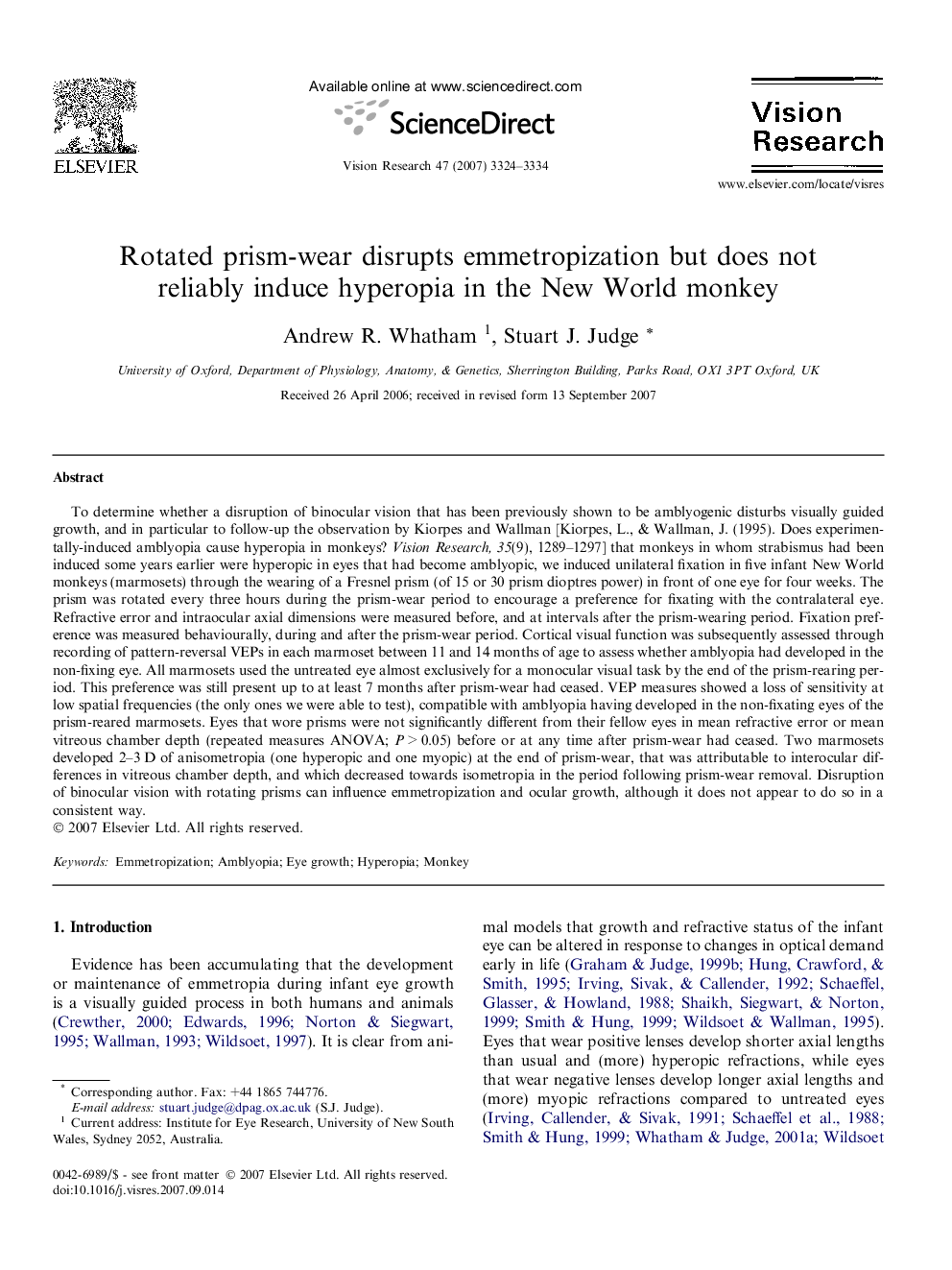| Article ID | Journal | Published Year | Pages | File Type |
|---|---|---|---|---|
| 6203960 | Vision Research | 2007 | 11 Pages |
To determine whether a disruption of binocular vision that has been previously shown to be amblyogenic disturbs visually guided growth, and in particular to follow-up the observation by Kiorpes and Wallman [Kiorpes, L., & Wallman, J. (1995). Does experimentally-induced amblyopia cause hyperopia in monkeys? Vision Research, 35(9), 1289-1297] that monkeys in whom strabismus had been induced some years earlier were hyperopic in eyes that had become amblyopic, we induced unilateral fixation in five infant New World monkeys (marmosets) through the wearing of a Fresnel prism (of 15 or 30 prism dioptres power) in front of one eye for four weeks. The prism was rotated every three hours during the prism-wear period to encourage a preference for fixating with the contralateral eye. Refractive error and intraocular axial dimensions were measured before, and at intervals after the prism-wearing period. Fixation preference was measured behaviourally, during and after the prism-wear period. Cortical visual function was subsequently assessed through recording of pattern-reversal VEPs in each marmoset between 11 and 14Â months of age to assess whether amblyopia had developed in the non-fixing eye. All marmosets used the untreated eye almost exclusively for a monocular visual task by the end of the prism-rearing period. This preference was still present up to at least 7Â months after prism-wear had ceased. VEP measures showed a loss of sensitivity at low spatial frequencies (the only ones we were able to test), compatible with amblyopia having developed in the non-fixating eyes of the prism-reared marmosets. Eyes that wore prisms were not significantly different from their fellow eyes in mean refractive error or mean vitreous chamber depth (repeated measures ANOVA; PÂ >Â 0.05) before or at any time after prism-wear had ceased. Two marmosets developed 2-3Â D of anisometropia (one hyperopic and one myopic) at the end of prism-wear, that was attributable to interocular differences in vitreous chamber depth, and which decreased towards isometropia in the period following prism-wear removal. Disruption of binocular vision with rotating prisms can influence emmetropization and ocular growth, although it does not appear to do so in a consistent way.
